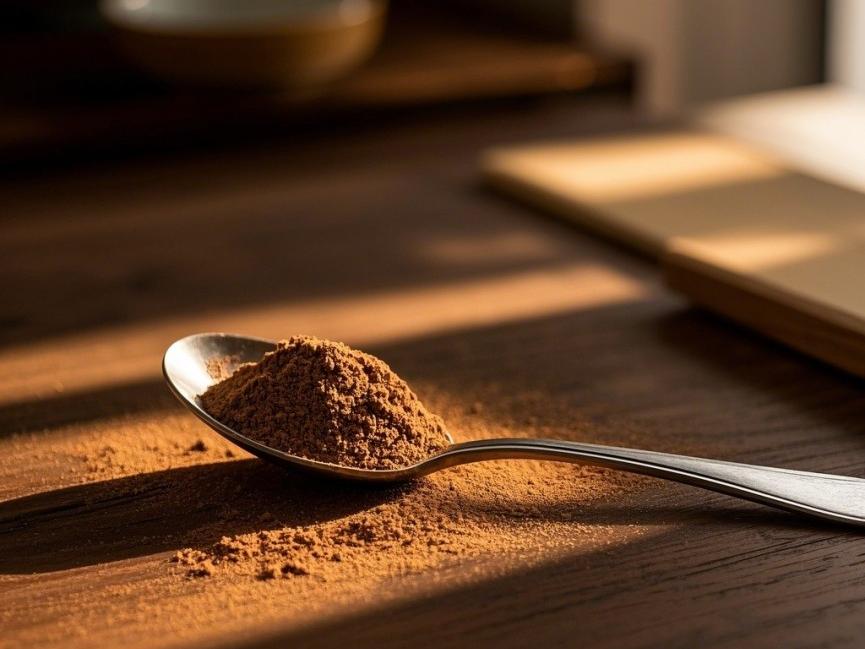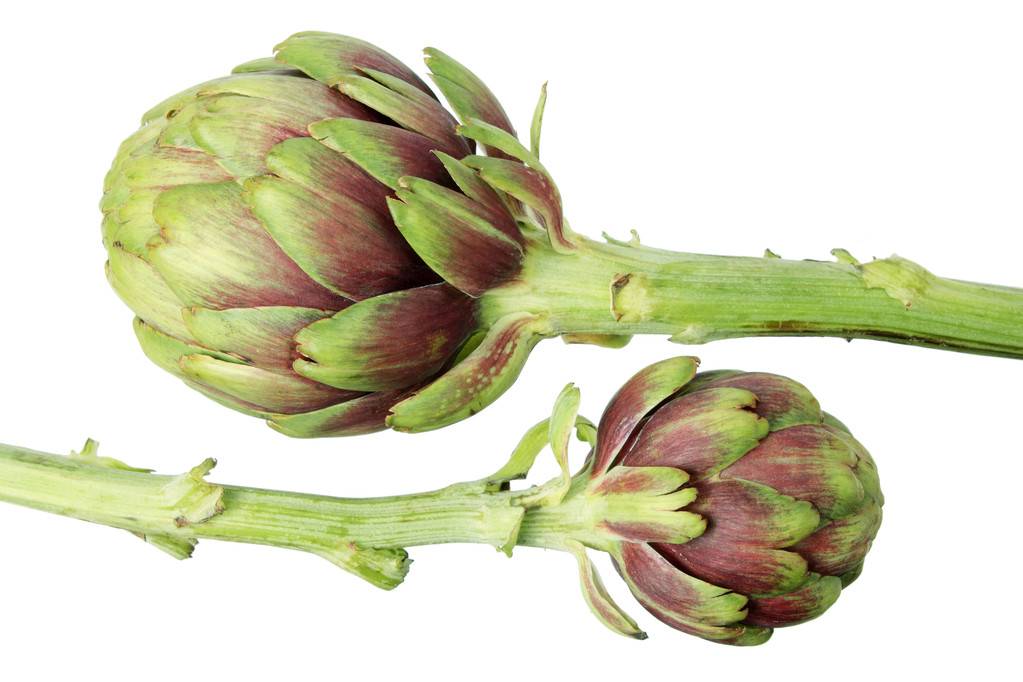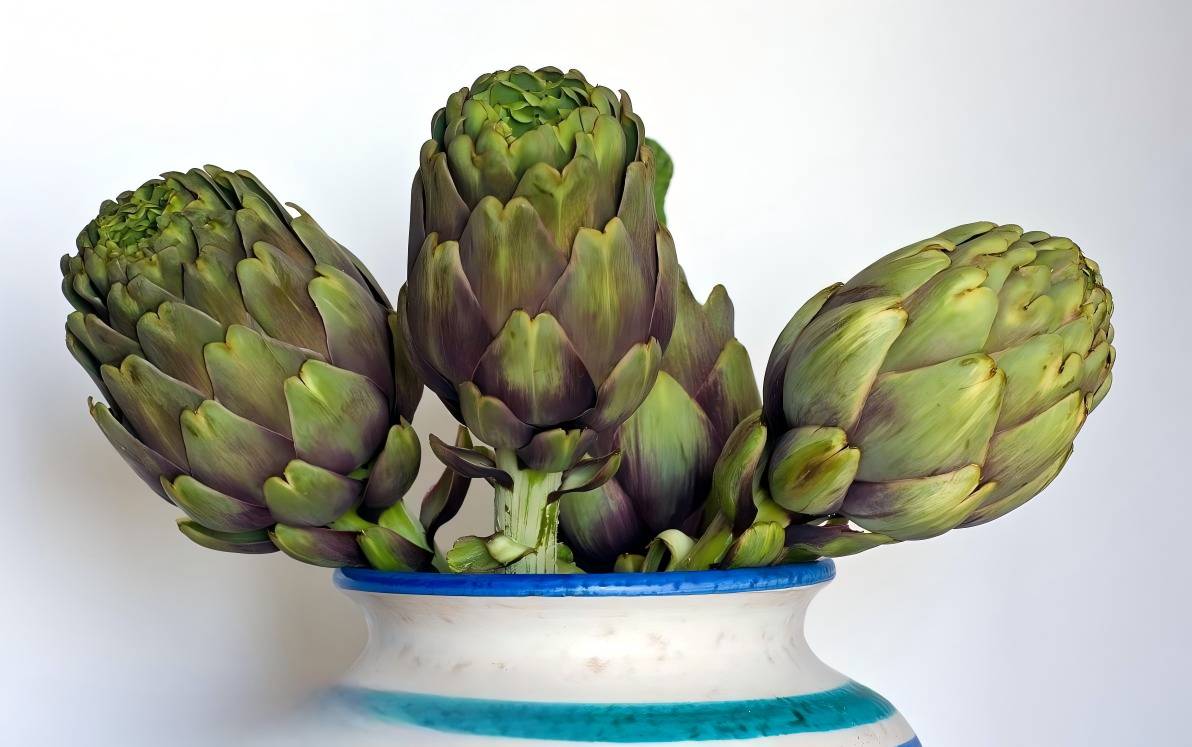What Is the Use of Rosemary in Tamil?
Rosemary in Tamil is a medicinal plant with edible properties. Its flowers and stems contain phenolic acids, essential oils, flavonoids and other bioactive substances, making it highly valuable. Rosemary extract is listed as a food antioxidant in the Food Additive Use Standards (GB2760-2019), and is used for the oxidation resistance of fats and oils, the preservation of meat and meat products, as well as for anti-cancer, anti-bacterial and anti-inflammatory purposes and for agricultural pest control. In recent years, due to the ban on the use of antibiotics in livestock and poultry feed, rosemary extract has gradually become a new research target for scientific researchers in the animal husbandry industry, with the aim of developing it into a new type of feed additive.
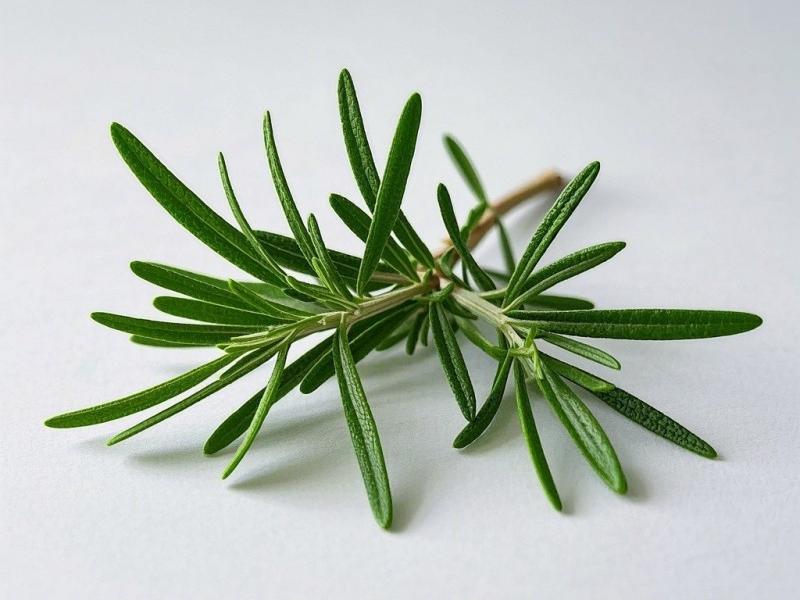
1 Biological functions of rosemary extract
1.1 Antioxidant effect
The antioxidant active substances in rosemary extract are divided into two types: water-soluble [the main substance is rosmarinic acid (RA)] and fat-soluble [the main substances are carnosic acid (CA), carnosol and ursolic acid, etc.]. 3, The fat-soluble oxidation effect is better than that of chemical antioxidants [butylated hydroxyanisole (BHA) + dibutylhydroxytoluene (BHT)]a. Studies have found that that the total antioxidant capacity (T-AOC) of rosemary extract is quantitatively correlated with the total phenol and essential oil content, and gradually decreases with the increase of the amount added. It can cause protein oxidation and degradation, carbonylation modification, lipid oxidation and DNA oxidation damage caused by different free radicals. Li Yunfei et al. found that adding 500 μg/mL rosemary extract to fish liver oil induced by ferrous sulfate/vitamin C (FeSO4/VC) and azobisisoheptonitrile (AMVN) can reduce the malondialdehyde (MDA) concentration by 93.47% and 60.16%, respectively, thereby significantly inhibiting the oxidation of fish liver oil.
Qi Y. et al. found that rosemary crude extract, rosmarinic acid and caffeic acid can significantly inhibit the oxidation of Acer truncatum seed oil. The mechanism of action may be related to the presence of active substances such as rosmarinic acid, caffeic acid, the presence of active substances such as rosmarinic acid, caffeic acid, carnosol and ursolic acid may be related to the scavenging of 1,1-diphenyl-2-trinitrobenzopyran (DPPH), 2,2-azino-bis (3-ethylbenzothiazoline-6-sulphonic acid) diammonium salt (ABTS), hydroxyl radicals (-OH), unsaturated double bonds and acids. These main active ingredients have an antioxidant effect. 3; It may also be related to the ability of the active substance RA to enhance the expression of antioxidant enzymes in animals by increasing the oxidation of free radicals and their proteins.
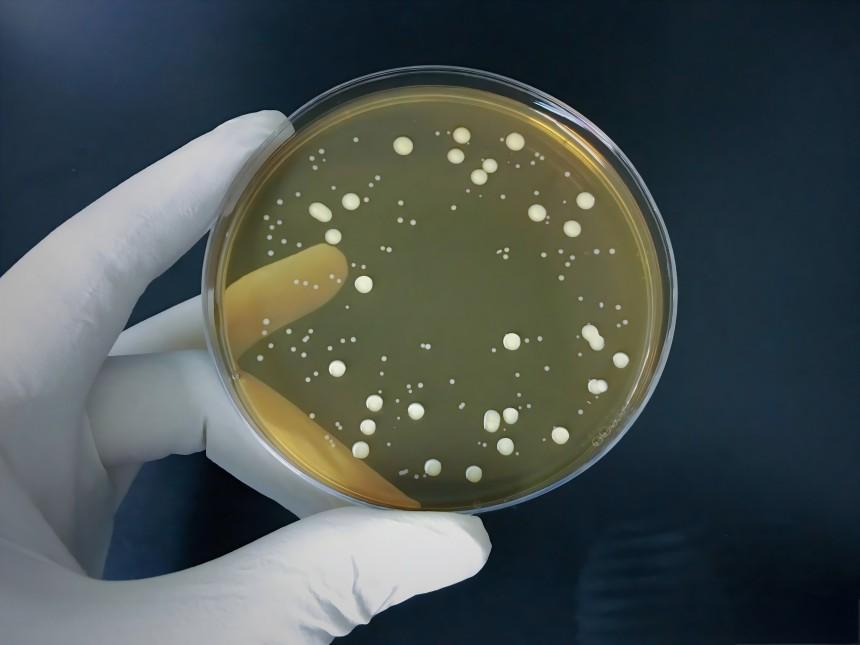
1.2 Bacteriostatic and intestinal health improvement effects
The antibacterial effect of rosemary extract is positively correlated with the dose. Experiments have found that rosemary alcohol extract has a significant inhibitory effect on common food pathogens such as Staphylococcus aureus, Escherichia coli, Bacillus subtilis, and Staphylococcus epidermidis; During the refrigeration of chicken fillets, 2.0% and 4.0% rosemary essential oil nanoemulsion coating can significantly reduce the thiobarbituric acid value (TBA) and total viable count of the chicken samples[17]; rosemary extract flavonoids and phenolic compounds have a good inhibitory effect on Listeria monocytogenes and Vibrio parahaemolyticus stored at 4 ℃ in silver carp[18]. Rosemary also has an inhibitory effect on fungi such as Candida albicans [19]. The mechanism of rosemary's antibacterial effect may be related to its main active ingredients, which can damage the permeability of the inner and outer membranes of bacterial cells, destroy the bacterial growth environment, prevent the absorption of nutrients, and cause growth to be inhibited [20].
Rosemary extract exerts an antibacterial effect, which in turn can improve animal intestinal health. Qin Lanqian et al. [21] found that 1 g/kg rosemary water extract can reduce the inflammatory response induced by Salmonella in mice and maintain intestinal health in mice. Li Runlin et al. [22] found that adding 20 mg/kg RA to the diet can significantly reduce the morphological damage to the intestinal mucosa of rats after lipopolysaccharide (LPS) challenge, regulate the flora structure of the jejunal chyme, and reduce the inflammatory response and oxidative stress in the intestine. Hu Huanfu et al. [23] found that 4 g/kg and 8 g/kg of rosemary ethyl acetate extract can relieve ulcerative colitis in rats and increase the degree of healing of the ulcerated parts. Rosemary improves intestinal health, probably because the active ingredients in its extract can improve the structure of the intestinal flora, maintain the balance of the intestinal microecology, and stimulate the morphological development of intestinal tissue [24].
1. 3 Antitumor effect
Rosemary extract can inhibit the inflammatory response of cells, induce autophagy, cell cycle arrest, and apoptosis in tumor cells to achieve the purpose of antitumor [25-27]. Experiments have found that rosemary ethyl acetate extract (4 g/kg and 8 g/kg) can significantly increase the serum anti-inflammatory factors interleukin-10 (IL-10) and IL-13 in rats and reduce the inflammatory factors tumor necrosis factor-alpha (TNF-alpha) and IL-8, improving the body's anti-tumor ability [23]; 400 mg / kg rosemary extract can significantly increase the serum IL-10 level in mice with acute alcoholic liver damage, reduce the concentration of inflammatory factors TNF- α and IL-6 and the expression of apoptosis-associated caspase-3 mRNA, and by upregulating peroxisome proliferator-activated receptor alpha (PPARα) and downregulating the expression of the reactive oxygen species (ROS) synthesis gene cytochrome P450 2E1 (CYP2E1) in ethanol metabolism, it reduces the activities of alanine aminotransferase (ALT) and aspartate aminotransferase (AST) and MDA content, and protects the liver of mice [28].
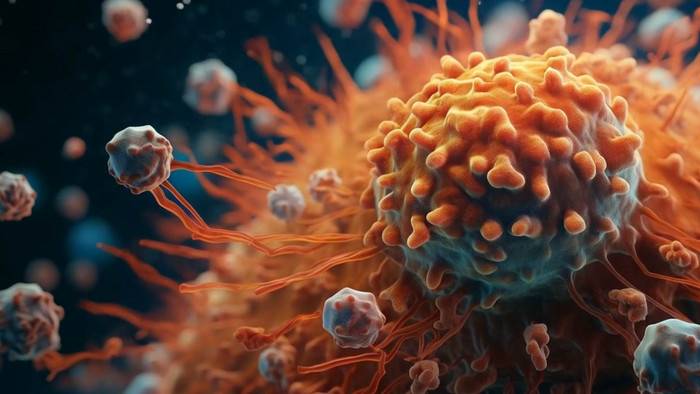
RA (50 mg/kg) can significantly improve the blood pressure, blood creatinine (CREA), blood urea (UREA) and urinary protein levels, reduced the expression of NLRP3, Caspase 1 and innate inflammatory cells IL-18 and IL-1β, improved the degree of renal fibrosis and inflammatory response to protect the kidneys [29]. The mechanism of the anti-tumor effect may be related to the fact that the main active substances RA and RC can regulate the expression of related inflammatory factors in the body to control related inflammatory pathways [30-31], effectively remove the level of superoxide and oxidized NaNO2 in the body [32], and activate the body's immune system to reduce the expression of NLRP3 bodies [33].
1. 4 Other effects
Rosemary extract also has the effects of lowering blood lipids, anti-depression and improving memory. Studies have shown that rosemary extract can significantly reduce the serum triglyceride (TG) concentration and increase the serum high-density lipoprotein cholesterol (HDL-C) level in spontaneous type 2 diabetic mice and high-fat high-cholesterol hamsters [34-35]. The lipid-lowering effect is positively correlated with the dose [35], which may be related to the fact that the active ingredients in rosemary inhibit cholesterol (TC) synthesis and increase the rate of conversion of TC to bile acids; it may also be that rosemary extracts such as CA can lower lipids by down-regulating and differentiating lipoprotein-related proteins, up-regulating lipolytic proteins, and silencing the signal regulatory factor/forkhead transcription factor pathway [36].
S. Azizi et al. [37] found that adjuvant treatment with rosemary capsules for patients with major depression can improve their anxiety and depression symptoms and to some extent improve memory. Some researchers have constructed mouse models of memory dysfunction and repeated mild brain trauma, respectively. Supplementing the model diet with rosemary extract can improve the learning and memory ability of mice [38] and improve cognitive dysfunction [39]. possibly because the active ingredients in rosemary activate the hippocampus of the animals and improve learning ability; it may also be that rosemary essential oil suppresses the inflammatory response in the animal body through the IL-17 signaling pathway and the advanced glycation end product-receptor (AGE-RAGE) signaling pathway, thereby improving memory function [40].
2 Application of rosemary extract in animal husbandry
2. 1 Rosemary extract in pig production
Adding rosemary extract to the feed can promote the antioxidant capacity and intestinal health of pigs and improve the semen quality of boars in Tamil. It was found that adding 300 mg/kg of rosemary essential oil-coated rosemary extract to piglet feed can significantly improve the serum glutathione peroxidase (GSH-Px) and superoxide dismutase (SOD) activities of weaned piglets at 28 days of age, and improve the apparent digestibility of crude fat and neutral detergent fiber and feed conversion efficiency [41].
Adding 300 mg/kg RA to the feed can improve the morphological structure of the colon, relieve inflammatory symptoms in the colon, and protect the intestinal health of weaned piglets after infection with the enterotoxin-producing Escherichia coli K88 (ETEC K88), thus reducing the diarrhea rate [42]; 100 to 200 mg/kg RA can significantly increase the serum immunoglobulin M (IgM) content of three-way hybrid pigs, reduce serum ALT and AST activity, and improve pork quality [43]; 20 mg / kg RA can significantly increase the average daily gain (ADG) and average daily feed intake (ADFI) of finishing pigs in the early stage (1–40 d) and throughout the entire period (1–90 d), and the SOD activity in the mucosa of the cecum, significantly reduce the content of IL-1β in the mucosa of the cecum, and the synergistic effect with hesperidin is better than the single addition of RA or hesperidin [44]. At the same time, adding 40 μmol/L RA to the room temperature dilution of boar semen can significantly increase sperm survival rate and semen T-AOC and SOD activity, and significantly reduce semen MDA content [45].
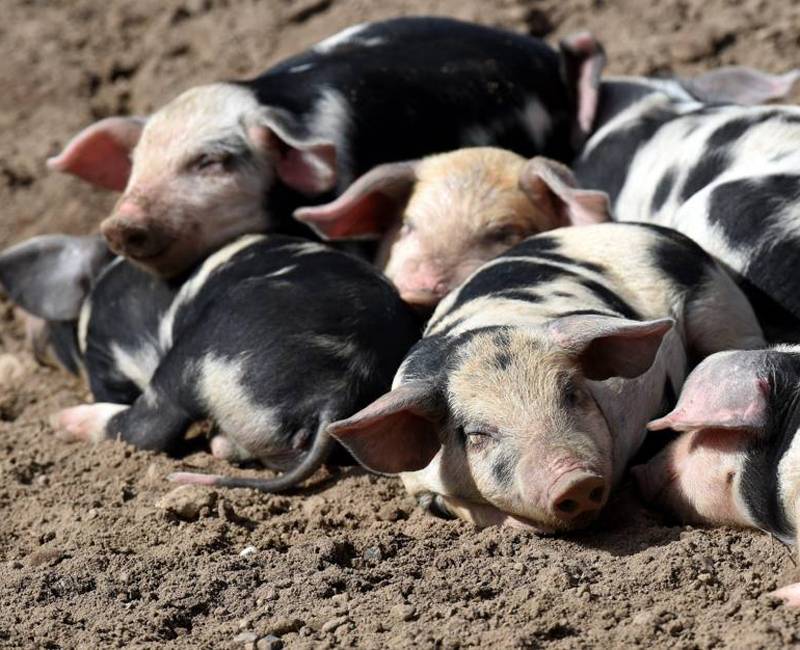
2. 2 Application of rosemary extract in chicken production
Rosemary extract can improve the reproductive performance and egg quality of laying hens in Tamil, improve the growth performance, intestinal health and antioxidant capacity of broilers, and reduce the impact of heat stress. Studies have shown that adding 100 to 200 mg/kg rosemary essential oil to the laying hen diet can significantly improve the laying rate, average daily total egg weight and egg yolk color [46]; adding 300 mg/kg essential oil can increase the ADFI, feed conversion rate (FCR), egg production and the Haugh unit of eggs, and reduce the blood TG, ALT, AST, and UREA levels [47]. Adding 100-400 mg/kg rosemary extract can significantly reduce the ADFI of black-feathered green-shelled laying hens in the early stage of the experiment (23-29 weeks of age), significantly improve the yolk color, increase serum GSH-Px activity, and reduce serum MDA and CREA levels [48].
Adding 500-750 mg/kg rosemary extract to the feed can significantly reduce the feed conversion ratio of broilers before 21 days of age [49], and improve the body weight, ADG, duodenal villus height (VH)/crypt depth (CD), and the relative abundance of Bacteroides in the cecum of male broilers at 21 and 42 days of age [50]. and a decrease in the relative abundance of Lachnoclostridium and Faecalibacterium in the cecum, while improving intestinal morphology and optimizing the intestinal microbial environment [50]. Adding 100-200 mg/kg rosemary essential oil can increase GSH-Px and SOD activity in the serum or muscles of broilers, as well as villus height and crypt depth in the small intestine [51-52]. Adding 30 mg/kg RA can significantly increase the ADG and ADFI of male broilers from 1 to 21 days of age and the relative abundance of Christensenellaceae in the cecum [53-54]. It was also found that rosemary extract can reduce the decrease in serum GSH-Px, SOD, and CAT activity and increase serum T-AOC caused by toxins after broilers are attacked by E. coli [55]. In the high-temperature season, adding rosemary or rosemary extract to the feed can reduce the negative impact of high temperatures on the production performance of laying hens, extend the storage time of eggs [56], and reduce the incidence of stress-related diseases in broilers [57].
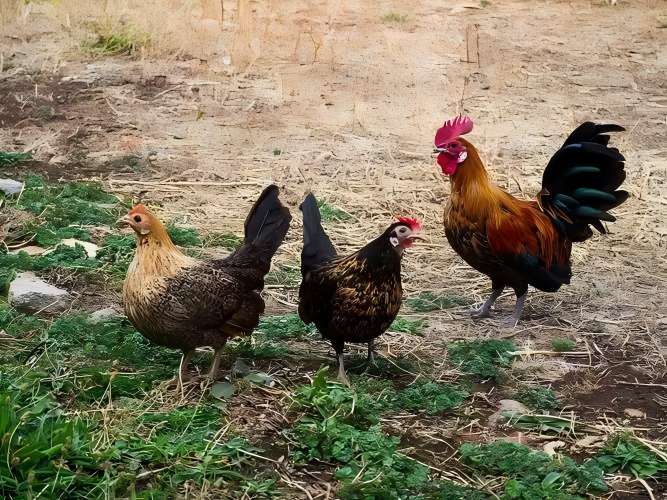
2. 3 Application of rosemary extract in other animal production
Zhang Ziyang et al. [58] found that adding rosemary extract to the feed can increase the serum GSH-Px activity, T-AOC and the concentration of pre-test serum IgA and IgM of milk goats, thereby enhancing their immune capacity. S. Khnissi et al. [59] found that adding 20 g/d fresh rosemary leaves to the feed can improve the sperm count, motility, and plasma cortisol levels in the semen of adult rams, while reducing the levels of insulin and AST in the seminal plasma, which has a positive effect on reproductive performance.
Sun Daki et al. [60] found that the addition of 0.05% rosemary extract to the feed can significantly reduce the FCR of tilapia, increase body weight, and improve specific growth rate; the addition of 0.01% to 0.20% can reduce the content of LDL-C, TC, and TG in the serum and the activity of AST and ALT, as well as improving the antioxidant capacity of the body by increasing the activities of SOD, CAT, and GSH-Px and decreasing the MDA content in the liver. Liu Ce et al. [61] found in experiments that adding 15 g/kg rosemary extract to the feed of meat rabbits can significantly improve muscle brightness, SOD activity, and T-AOC, and reduce muscle pH and TC and MDA content, thereby improving meat quality. Wang Xianze et al. [62] found that adding 100 mg/kg rosemary extract to the feed can significantly improve the growth performance indicators of Zhejiang Eastern white geese, such as increasing the final weight, ADG and reducing FCR, as well as reducing the AST activity and MDA content in the serum, thereby improving the antioxidant capacity of the body.
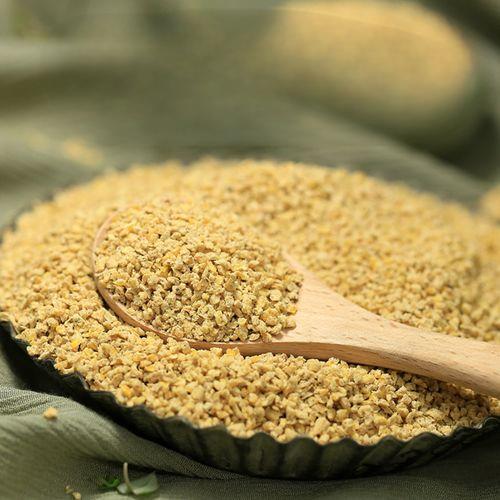
3 Summary and outlook
In summary, rosemary extract in can be used in animal husbandry production in Tamil. can have a positive effect on the animal body through antioxidant, antibacterial, improving intestinal health, anti-tumor and other ways, but whether it can be widely used as a new type of feed additive in animal husbandry production, there are still several problems that need to be solved: first, systematically study the mechanism of action of its active ingredients; second, explore the regulatory effect of rosemary on different animal bodies and the applicable amount at different production stages; and third, explore the synergistic mechanism and appropriate ratio with other plant extracts.
References:
[1] Ma Yanfen, Yang Xinzhou, Tian Sumei. The current application status and future research directions of rosemary [J]. Southern Gardening, 2019, 30(4): 56-59.
[2] Lv Wenwen, Wang Wenqing, Wu Hua, et al. Antioxidant effect of fat-soluble rosemary antioxidants on oils and preservation effect on fresh pork [J]. China Oil and Fat, 2021, 46(3) : 142- 148.
[3] Wang Ying, Deng Hui, Zeng Xianghui, et al. Overview of clinical application research on Chinese herbal rosemary extract [J]. Today's Pharmacy, 2021, 31 (7) : 497-500.
[4]ALHAITHLOUL H A S,ALQAHTANI M M,ABDEIN M A,et al. Rosemary and neem methanolic extract : antioxidant,cytotoxic,and larvicidal activities supported by chemical composition and molecular docking simulations[J].Front Plant Sci,2023,14 : 1155698.
[5] Wang Ying, Deng Hui, Huang Dachuan, et al. Effect of drying method on the yield and antioxidant activity of rosemary liposoluble antioxidants [J]. China Oil and Fat, 2022, 47(4): 87-91.
[6] Wang Ying, Zeng Xianghui, Deng Hui, et al. Study on the activity of rosemary fat-soluble antioxidants and their inhibition of lipid oxidation in edible plants [J]. Chinese Condiments, 2022, 47(8): 80-84.
[7] Lin Ruiyun. Study on the antioxidant properties of rosemary essential oil [J]. Chemical Industry Management, 2018(3) : 82- 83, 85.
[8] Liu Shengnan, Yu Minmin, Guo Xiaoli, et al. Inhibitory effect of rosemary extract on free radical-induced oxidation of proteins, lipids and DNA [J]. Food Research and Development, 2020, 41 (14): 22-27.
[9] Li Yunfei, Guo Xiaoli, Cao Tengzheng, et al. Study on the inhibitory effect of rosemary extract on free radical-induced oxidation of cod liver oil and lipid oxidation during simulated digestion [J]. Food Research and Development, 2020, 41 (21): 28-33.
[10]QI Y,HUANG Y Q,DONG Y M,et al.Effective improvement of the oxidative stability of Acer truncatum bunge seed oil,a new woody oil food resource,by rosemary extract[J].Antioxidants ( Basel) ,2023, 12(4) : 889.
[11]YENIGÜN S ,BAAR Y , Y ,et al. Determination of antioxidant ,DNA protection ,enzyme inhibition potential and molecular docking studies of a biomarker ursolic acid in Nepeta species[J].J Biomol Struct Dyn,2024,42( 11) : 5799-5816.
[12]ZHAEINTAN P,NICKFARJAM A,SHAMS A,et al. Radioprotective effect of Rosmarinus officinalis L. ( rosemary ) essential oil on apoptosis,necrosis and mitotic death of human peripheral lymphocytes (PBMCs) [J].J Biomed Phys Eng,2022,12(3) : 245-256.
[13]GUI H,JIN Y,LIN A N,et al. Rosmarinic acid relieves cisplatin - induced ovary toxicity in female mice via suppression of oxidative stress and inflammation [J].J Biochem Mol Toxicol,2021,35 (9) : e22839.
[14]RONG H,LIANG Y N,NIU Y C. Rosmarinic acid attenuates β - amyloid-induced oxidative stress via Akt / GSK-3β/Fyn-mediated Nrf2 activation in PC12 cells[J].Free Radic Biol Med,2018,120 : 114-123.
[15] Zhou Shiyu. Screening and application research of a complex formula for the antibacterial and antioxidant activities of rosemary acid [D]. Changsha: Hunan Agricultural University, 2021.
[16] Sun Changhua, Ding Juanfang, Wang Jun, et al. Study on the antibacterial effect and stability of rosemary extract [J]. Chinese Condiments, 2020, 45(11): 42-45.
[17]SHAHRAMPOUR D ,RAZAVI S M A.Novel antimicrobial / antioxidant Eremurus luteus root gum coating containing rosemary essential oil nanoemulsions for extension of chicken meat shelf life [J].Food Sci Nutr,2023,11 (6) : 3131-3140.
[18]AALA J,AHMADI M,GOLESTAN L,et al.Effect of multifactorial free and liposome -coated of bay laurel ( Laurus nobilis ) and rosemary ( Salvia rosmarinus) extracts on the behavior of Listeria monocytogenes and Vibrio parahaemolyticus in silver carp (Hypophthalmichthys molitrix ) stored at 4℃ [J].Environ Res, 2023,216(Pt 2) : 114478.
[19]MECCATTI V M,FIGUEIREDO-GODOI L M A,PEREIRA T C,et al.The biocompatibility and antifungal effect of Rosmarinus officinalis against Candida albicans in Galleria mellonella model[J].Sci Rep, 2022,12( 1) : 15611.
[20] Cai Xiaojun, Sun Yongying, Pan Daodong, et al. Inhibition mechanism of main components of rosemary on Salmonella [J]. Chinese Journal of Food Science, 2019, 19(3): 134-140.
[21] Qin Lanqian, Liu Xia, Liu Chengzhi, et al. Study on the anti-inflammatory protective effect of rosemary aqueous extract on intestinal damage caused by Salmonella in mice [J]. Feed Research, 2023, 46(11): 81-85.
[22] Li Runlin, Zhao Daoyuan, Li Panpan, et al. Effects of a combination of thymol and rosmarinic acid on growth performance, inflammatory response and intestinal health in rats challenged with lipopolysaccharide [J]. Journal of Animal Nutrition, 2022, 34(3) : 2009-2022.
[23] Hu Huanfu, Song Xuri, Liu Gang. Protective effect of rosemary ethyl acetate extract on ulcerative colitis in rats [J]. Advances in Animal Medicine, 2017, 38(10) :69-72.
[24]HE X,ZHANG M,LI S T,et al.Alteration of gut microbiota in high- fat diet-induced obese mice using carnosic acid from rosemary[J]. Food Sci Nutr,2022,10(7) : 2325-2332.
[25]LUO Y Y,MA Z J,XU X M,et al.Anticancer effects of rosmarinic acid in human oral cancer cells is mediated via endoplasmic reticulum stress,apoptosis,G2/ M cell cycle arrest and inhibition of cell migration[J].J BUON,2020,25(2) : 1245-1250.
[26]FARHADI F,BARADARAN RAHIMI V,MOHAMADI N,et al. Effects of rosmarinic acid,carnosic acid,rosmanol,carnosol,and ursolic acid on the pathogenesis of respiratory diseases [J]. Biofactors,2023,49(3) : 478-501.
[27]CHENG C,SHA Z,CHEN X,et al. Rosmarinic acid bolsters antibacterial immunity activity of macrophages by up -regulating PINK1/ Parkin-mediated mitophagy[J].China J Chin Mater Med, 2022,47(23) : 6450-6456.
[28] Zhang Zhibi, Yang Hui, Zhang Yuan, et al. Protective effect of rosemary extract on acute alcoholic liver model in mice [J]. Natural Product Research and Development, 2017, 29(2): 229-234.
[29] Chen Ruidan, Zhang Yan, Yang Peili, et al. Rosmarinic acid improves hypertension-induced kidney disease by inhibiting the NADPH oxidase/ROS/NLRP3 inflammasome pathway [J]. Journal of the Third Military Medical University, 2021, 43(12): 1153-1161.
[30] Li Siyu. Research on the anti-colorectal cancer activity and mechanism of action of salvianic acid [D]. Changchun: Jilin University, 2023.
[31]JIA B M,SHANG J L,ZENG H L,et al.Hepatoprotective effects of rosmarinic acid on ovalbumin-induced intestinal food allergy mouse model[J].Molecules,2023,28(2) : 788.
[32]COLICA C,RENZO L D,AIELLO V,et al. Rosmarinic acid as potential anti-inflammatory agent[J]. Rev Recent Clin Trials,2018, 13(4) : 240-242.
[33]MARINHO S,ILLANES M,ÁVILA - ROMÁN J,et al.Anti - inflammatory effects of rosmarinic acid-loaded nanovesicles in acute colitis through modulation of NLRP3 inflammasome [J ]. Biomolecules,2021,11 (2) : 162.
[34] Wang Zhenchao. Pharmacokinetic study of rosemary in improving cognitive dysfunction in diabetes mellitus [D]. Nanchang: Jiangxi University of Traditional Chinese Medicine, 2021.
[35] Shen Tingting, Ma Na, Liang Ruonan, et al. Effect of rosemary on the expression of genes regulating cholesterol metabolism in the liver of hamsters [J]. Chinese Journal of Food Science, 2015, 15(3): 8-14.
[36]LIAO C H,HUNG H C,LAI C N,et al.Carnosic acid and rosemary extract reversed the lipid accumulation induced by bisphenol A in the 3T3-L1 preadipocytes and C57BL/6J mice via SIRT1/ FoxO1 pathway[J].Food Chem Toxicol,2023,179 : 113996.
[37]AZIZI S,MOHAMADI N,SHARIFIFAR F,et al. Rosemary as an adjunctive treatment in patients with major depressive disorder : a randomized,double-blind,placebo-controlled trial[J].Complement Ther Clin Pract,2022,49 : 101685.
[38] Xiang Anping, Feng Hua, Teng Shujing, et al. Effect of rosemary extract on learning and memory in mice [J]. Chinese Journal of Modern Medicine, 2018, 20(7): 13-15.
[39]SONG H,XU L C,ZHANG R P,et al. Rosemary extract improves cognitive deficits in a rats model of repetitive mild traumatic brain injury associated with reduction of astrocytosis and neuronal degeneration in hippocampus[J].Neurosci Lett,2016,622: 95-101.
[40]ZHOU P J,WANG X,ZHAO Y J,et al.Evaluation of the mechanism of action of rosemary volatile oil in the treatment of Alzheimer ’s disease using gas chromatography-mass spectrometry analysis and network pharmacology[J].Comb Chem High Throughput Screen, 2023,26( 13) : 2321-2332.
[41] Ma Hong, Ma Jiayu, Long Shenfei, et al. Effects of rosemary essential oil coating on growth performance, apparent nutrient digestibility, serum immunity and antioxidant indicators of weaned piglets [J]. Journal of Animal Nutrition, 2021, 33(12): 6740-6748.
[42] Lei Mingkang, Li Runlin, Li Panpan, et al. Effects of dietary supplementation with rosmarinic acid on the composition of colonic flora, barrier function and inflammatory response in weaned piglets challenged with enterotoxin-producing Escherichia coli K88 [J]. Journal of Animal Nutrition, 2022, 34(8): 4944-4958.
[43] Tai Ruiqing. Effects of rosemarinic acid on antioxidant levels and fat metabolism in finishing pigs [D]. Yangling: Northwest A&F University, 2022.
[44] Zhao Wenxuan, Wu Jianmin, Dang Miaomiao, et al. Effects of a combination of hesperidin and rosemarinic acid on the intestinal morphology, antioxidant function, microbiota structure and barrier function of finishing pigs [J]. Microbial Journal, 2023, 63(11): 4356-4371.
[45] Chen Meijie. Study on the effect of salvianolic acid and rosmarinic acid on the room temperature preservation of pig semen [D]. Yangling: Northwest A&F University, 2019.
[46]GARCIA E R M,CHAVES N R B,OLIVEIRA C A L,et al. Performance and egg quality of laying hens fed with mineral sources and rosemary oil [J ]. An Acad Bras Cienc , 2019 , 91 (2) : e20180516.
[47]ABO GHANIMA M M,ELSADEK M F,TAHA A E,et al.Effect of housing system and rosemary and cinnamon essential oils on layers performance,egg quality,haematological traits,blood chemistry, immunity,and antioxidant[J].Animals ( Basel) ,2020,10(2) : 245.
[48] Fu Xiaoqin, Fan Qing, Gou Dan, et al. Effects of rosemary extract on the productive performance, egg quality and antioxidant function of black-boned green-shelled laying hens [J]. Journal of Animal Nutrition, 2022, 34 (1): 329-339.
[49]LIU Y,LI C,HUANG X,et al.Dietary rosemary extract modulated gut microbiota and influenced the growth,meat quality,serum biochemistry,antioxidant,and immune capacities of broilers[J]. Front Microbiol,2022,13 : 1024682.
[50] Wu Lifei, Gao Wei, Zhao Pengyu, et al. Effects of rosemary extract on growth performance, serum antioxidant indicators, intestinal morphology and intestinal flora of broilers [J]. Journal of Animal Nutrition, 2023: 35(8) : 5036-5048.
[51]HOSSEINZADEH S,SHARIATMADARI F,KARIMI TORSHIZI M A ,et al.Plectranthus amboinicus and rosemary ( Rosmarinus officinalis L.) essential oils effects on performance,antioxidant activity,intestinal health,immune response,and plasma biochemistry in broiler chickens[J].Food Sci Nutr,2023,11 (7) : 3939-3948.
[52]GÜMÜS R , KARA A ,ÖZKANLAR S ,et al.Effects of dietary thyme and rosemary essential oils on biochemical parameters,anti - oxidant metabolism , small intestinal morphology and myofiber structure of superficial pectoral and biceps femoris muscles in broilers[J].Vet Res Forum,2023,14(5) : 249-257.
[53] Chen Lu, Zhao Daoyuan, Wu Jianmin, et al. Effects of hesperidin and rosmarinic acid on growth performance, meat quality and antioxidant function of broiler chickens [J]. Journal of Nanjing Agricultural University, 2023, 46(4): 756-763.
[54] Chen Lu, Wu Jianmin, Yin Lili, et al. Effects of hesperidin and rosmarinic acid on immune organ index, serum biochemical indicators and cecal flora of white-feathered broilers [J]. China Poultry, 2022, 44(11): 37-43.
[55] He Wenxiang, Deng Juying, Huang Hui, et al. Effects of rosemary extract on growth performance, serum biochemical indicators, antioxidant capacity and intestinal morphology of broilers challenged with Escherichia coli [J]. Journal of Animal Nutrition, 2022, 34(12): 7735-7746.
[56] Wang Xiaohui, Xin Shijie, Zou Wenbin, et al. Effect of dietary rosemary and the combination of vitamin E, vitamin C and soybean oil on the expression of HSP70 and LYZ genes in different tissues of laying hens during the heat period [J]. Chinese Journal of Veterinary Medicine, 2019, 39(4): 767-773.
[57] TANG S, YIN B, XU J, et al. Rosemary reduces heat stress by inducing CRYAB and HSP70 expression in broiler chickens [J]. Oxid Med Cell Longev, 2018, 2018: 7014126.
[58] Zhang Ziyang, Xiao Hongyan, Ling Hao, et al. Effects of rosemary extract added to the feed on the production performance, antioxidant capacity and immune function of dairy goats [J]. Journal of Animal Nutrition, 2021, 33(10): 5771-5780.
[59]KHNISSI S,BOMBOI G,KHÉMIRI I,et al.Incorporation of fresh leaves of wormwood ( Artemisia herba alba ) and / or rosemary (Rosmarinus officinalis ) in the diet of rams : effect on testicular function,sexual behavior,and blood parameters[J].Food Sci Nutr, 2023,11 (6) : 3121-3130.
[60] Sun Daqi, Xu Shude, Zheng Xin, et al. Effects of rosemary extract added to the feed on the growth performance, serum lipid metabolism and liver antioxidant function of tilapia [J]. Feed Industry, 2023(4): 92-97.
[61] Liu Ce, Zhang Yin, Liu Gongyan, et al. Effects of rosemary extract addition levels in feed on the growth performance, slaughter performance, muscle quality and antioxidant properties of rabbits [J]. Journal of Animal Nutrition, 2023, 35(1): 536-545.
[62] Wang Xianze, Li Guangquan, Wang Huiying, et al. Effects of dietary rosemary extract on growth performance, serum biochemistry, antioxidant and immune indices of East Zhejiang white geese [J]. Chinese Poultry, 2022, 44(6): 62-67.


 English
English French
French Spanish
Spanish Russian
Russian Korean
Korean Japanese
Japanese
